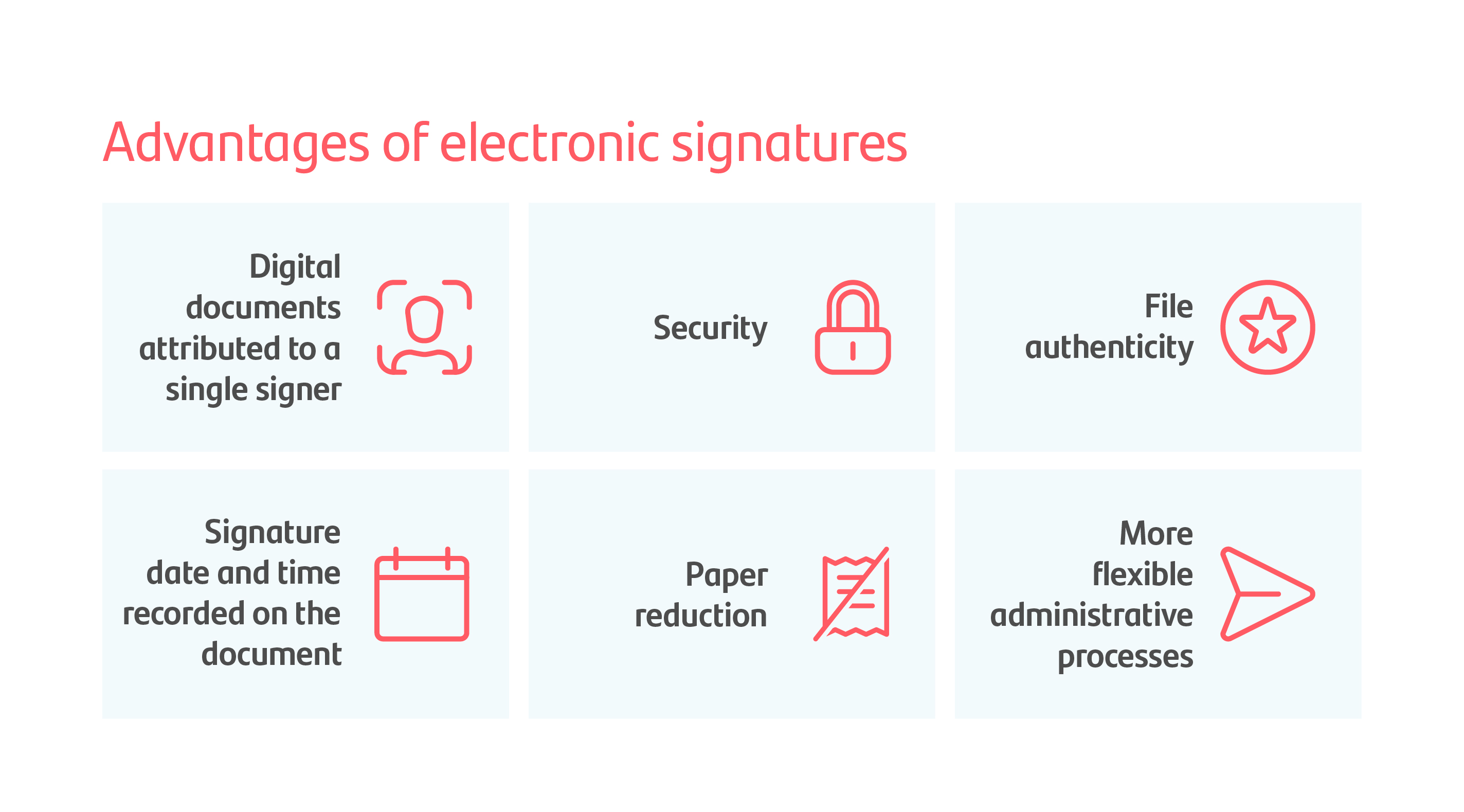What’s an electronic signature?


Digitalization makes several things possible, including signing official and administrative documents electronically. How does an electronic signature work and how can we get one?
What’s an electronic signature?
An electronic signature is a set of electronic data on a digital document that can serve the same purpose as a handwritten signature on a paper document to prove acceptance of the terms or wording of a contract, administrative form, a personal document or any other type of instrument. Three types electronic signatures are:
- Simple, which consists of electronic data that users enter to sign.
- Advanced, which enables us to identify signers as well as any changes to data stipulated in a sealed document.
- Qualified, which can have the same legal standing as a 'wet-ink' signature.
What are the advantages of electronic signatures?
The advantages electronic signatures have over traditional signatures stem from digitalization. They include authenticity, security, paper reduction and more flexible administrative processes.

How do I digitalise my signature?
Obtaining an electronic signature can depend on many factors (e.g., place of residence) because each country has laws on its use. In Spain, applying for an electronic signature and signing with an electronic form of government ID requires special hardware and software.
Several forms of ID facilitate administrative tasks online in Spain. The DNIe (electronic Spanish ID card) lets us sign official documents on a computer, while the DNI 3.0 lets us sign with near-field communication (NFC), like with contactless credit cards.
In Argentina, Chile, Mexico and other countries, electronic signatures are also subject to laws on their use and equivalent standing.

Are electronic signatures secure?
They are highly protected under each country's laws to ensure authenticity and the integrity of a sealed document.
From a technology standpoint, hashing (a cryptographic function ensuring a message or document has not been modified and a signature is authentic) is used for security. Companies could find that technology useful, as underlined by Santander Argentina.
What’s the difference between electronic signature and digital signature?
While similar, the difference lies in their security.
Digital signatures are based on a numerical technique to certify a digital message or document as authentic. In other words, they seal documents so they can’t be altered, and belong to the identified person. Getting a digital signature usually requires a public key or certificate, such as an electronic ID, according to the guidelines of each country’s authorities. Once received, we can digitize our signature on suitable software.
Electronic signatures comprise electronic data linked to a document in the same format. As they are produced electronically, their date and time are recorded, and they enjoy legal standing.
It's important to remember that the digital signature and digitized signature are not the same. Although similar, the main difference is their level of security.






